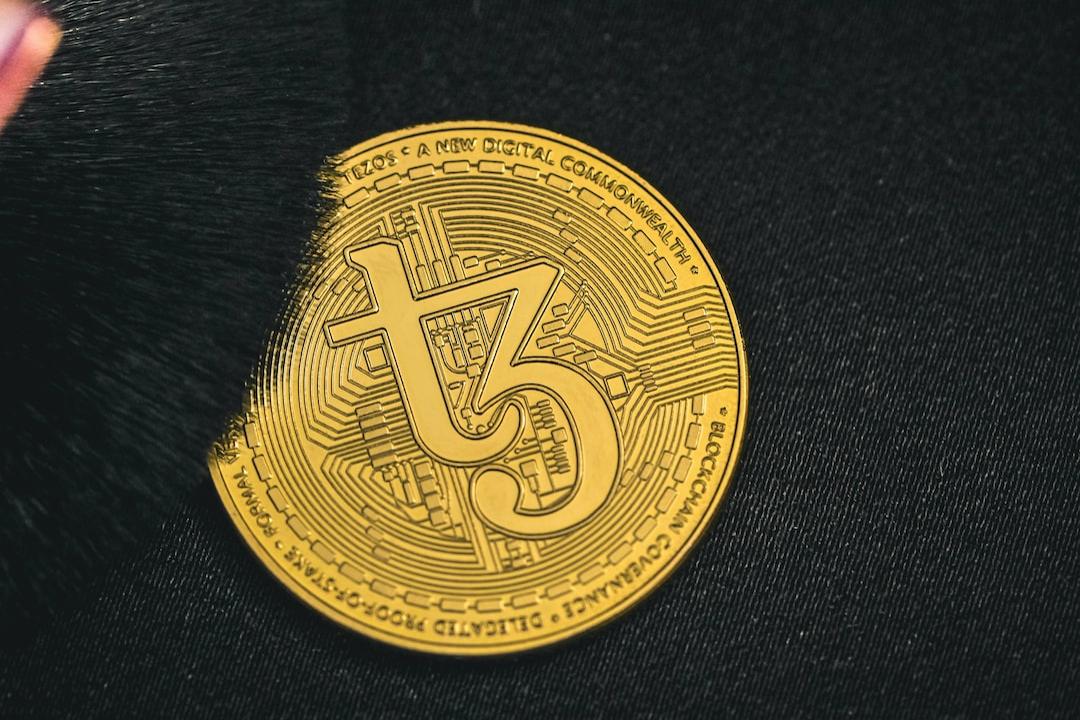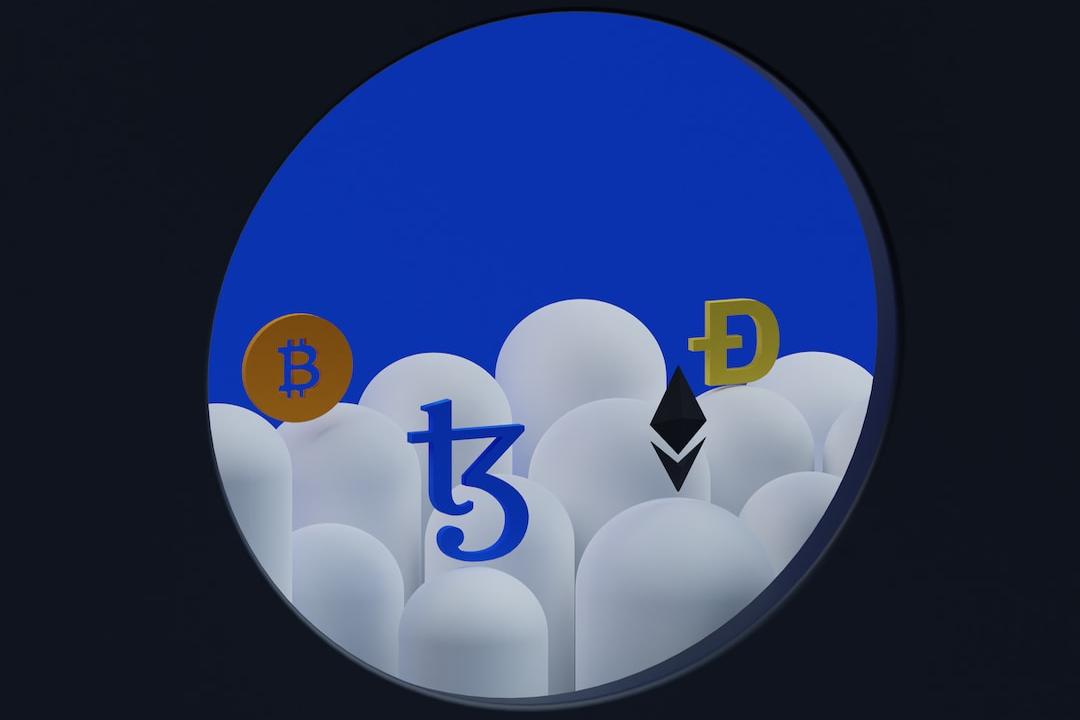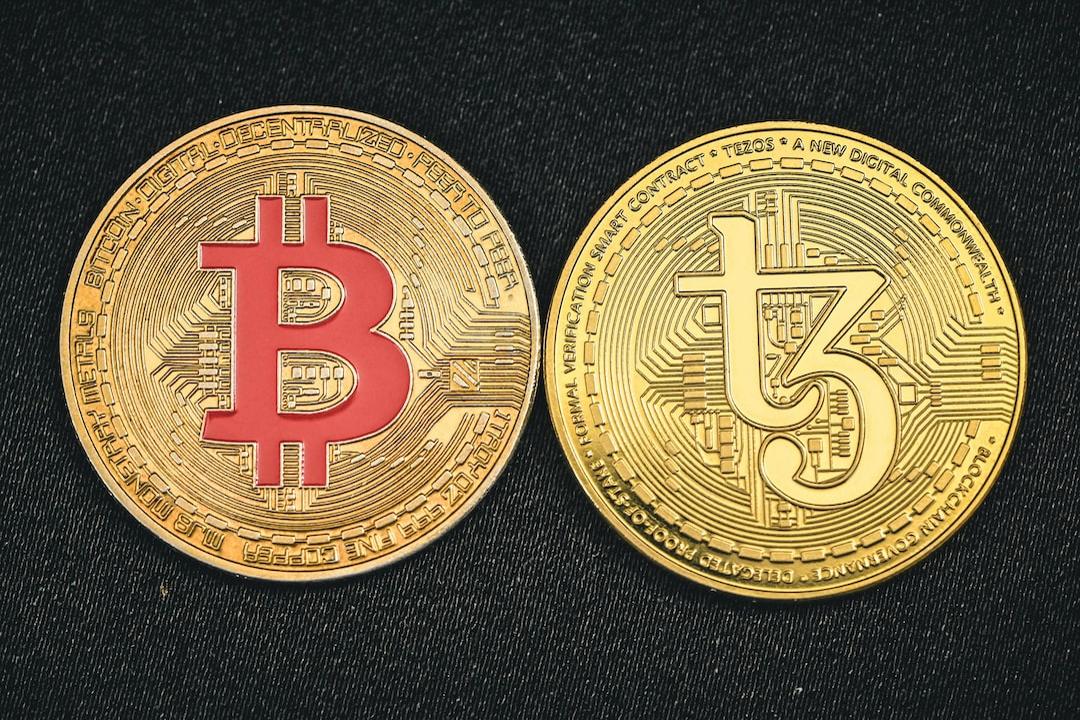CoinWorld reported:
Author: Tranks Source: DeSpread Research
1. Introduction
With the development of the IT industry, improvements in computing power, and the widespread application of big data, the performance of artificial intelligence (AI) models has significantly enhanced. In recent years, AI capabilities have reached or even surpassed human levels in many fields, rapidly being applied in industries such as healthcare, finance, and education.
A typical case of AI commercialization is ChatGPT, a generative AI model launched by OpenAI in November 2022, which can understand and respond to human natural language. ChatGPT attracted 1 million users just 5 days after its launch and reached 100 million monthly active users within 2 months, becoming the fastest-growing consumer application in history.
NVIDIA, which designs and manufactures the GPUs required for major AI platforms, has also greatly benefited from this trend. In the first quarter of 2024, NVIDIA’s net profit increased by 628% year-on-year to reach $14.8 billion, with its stock price rising approximately threefold compared to last year, bringing its market value to $3.2 trillion, showcasing exceptional performance.
The rise of the AI industry has had a significant impact on the cryptocurrency market. In June 2022, during the peak of NFT art projects, OpenAI released its AI model DALL-E 2, which can generate high-quality images from text, leading to an 8-fold increase in mentions of AI keywords in major Korean crypto Telegram channels. Furthermore, starting from the second half of 2022, there has been a growing number of attempts to directly combine AI and blockchain, with mentions of AI increasing another 2-fold.

The strong interest of the crypto community in AI is also reflected in the investment trends surrounding AI-related crypto projects. According to data from the virtual asset statistics website Coingecko, as of August 20, 2024, the total market value of 277 blockchain projects classified in the AI sector since the emergence of AI and blockchain projects in the second half of 2022 has rapidly grown to $21 billion, surpassing the Layer2 category by approximately 25%.
However, the currently focused blockchain projects in the AI field mainly aim to utilize blockchain technology to address the limitations exposed during the development of the AI industry. The main application scenarios include:
Distributed GPU Network: These projects leverage blockchain technology to create a distributed GPU network where anyone can contribute GPU computing power and earn token rewards, thereby lowering the entry barrier posed by the high costs of GPU required for AI model training (e.g., IO.NET, Akash Network).
Decentralized AI Training and Model Development: These projects allow multiple participants to jointly engage in AI training and model development, earning token rewards through blockchain technology, aiming to resolve bias issues arising from centralized AI development environments (e.g., Bittensor).
On-chain AI Market: These decentralized AI market projects use blockchain technology to transparently evaluate and trade the performance and reliability of AI models or agents, catering to the demands of various industries and specific functionalities for AI models or agents (e.g., SingularityNET, Autonolas).
In addition to the aforementioned examples, many new attempts are emerging to utilize blockchain infrastructure, such as decentralized data markets and IP protocols, to address challenges currently faced by the AI industry. These attempts are creating synergistic effects by providing a more stable infrastructure for the AI industry and expanding the application scope of blockchain technology.
At the same time, integrating AI into the blockchain ecosystem also holds unlimited development potential. Particularly in permissionless DeFi services, the introduction of AI can reduce dependence on trusted third parties, thus enabling functionalities that are difficult to achieve with many existing smart contracts.
In this article, we will explore specific application examples of AI in current DeFi protocols, the challenges faced, and the future development directions of AI in DeFi.
2. Intelligent DeFi
AI possesses exceptional real-time data analysis capabilities, enabling it to draw conclusions from large volumes of data. This characteristic plays a vital role in helping users execute financial operations and manage risks, providing concrete data on the returns and risks of specific DeFi protocols. In this context, AI is primarily applied to the user interface of Dapps, allowing existing DeFi protocols to utilize AI without significant structural adjustments.
Yearn Finance is a typical example. It is a yield aggregator that is collaborating with the AI agent platform GIZA to establish a real-time strategy risk assessment system for its v3 vault to provide users with a safer investment environment.
However, I am more focused on the potential for DeFi protocols to gain autonomy through the integration of AI’s independent thinking and action capabilities within the DeFi ecosystem.
Current DeFi protocols usually respond passively to user transactions, meaning that the smart contracts of the protocol operate in a pre-set manner based on user interactions. However, by incorporating AI into DeFi protocols, they can autonomously analyze market conditions, make optimal decisions, and proactively generate trades. This makes it possible for DeFi protocols to offer new types of financial services that were previously difficult to achieve.
Let us take a closer look at some intelligent DeFi protocols that apply AI in their primary operational mechanisms.
2.1. Fyde Treasury: AI Token Fund
Fyde Treasury is a protocol that provides a basket fund service called Liquid Vault, which operates multiple tokens managed by AI. Users can receive and use liquidity tokens $TRSY corresponding to the assets deposited in the Liquid Vault.
2.1.1. Asset Selection and Fund Operations
The core task of Liquid Vault is to increase the proportion of low-volatility tokens during market downtrends to provide users with a lower loss rate, thereby outperforming other asset classes in the long term.
Fyde Treasury selects assets to include in the Liquid Vault portfolio through the following three steps:
Assess the adequacy of trading liquidity
Check the background of the protocol’s founders and the audit status of the protocol’s code to determine if there are any issues
Use AI to analyze on-chain data to assess the presence of wash trading, token concentration, and natural growth trends
Tokens that meet these criteria will be included in the Liquid Vault portfolio. Additionally, Fyde Treasury also utilizes AI in the asset management process of the Liquid Vault, specifically including:
Market Analysis and Forecasting: Analyzing on-chain trading data, market trends, and news to predict future market movements
Weight Calculation and Rebalancing: Calculating the optimal token weights and rebalancing based on predicted market trends and the recent performance and volatility of tokens in the portfolio
Risk Management and Response: Rapidly identifying governance attacks, liquidity pool depletion, and abnormal transactions of specific wallets for each token in the portfolio in real-time, and adjusting the portfolio or isolating related tokens as necessary
Advanced Asset Management Strategies: Continuously evaluating the portfolio’s performance, analyzing the effectiveness of strategies, and extracting data to modify and develop new strategies. Existing strategies are then compared with new strategies to measure their performance and applied to actual operational strategies
As of the writing date, August 23, the Liquid Vault portfolio includes a total of 29 tokens, all of which are various industry tokens based on the Ethereum network.

Liquid Vault Dashboard, Source: Fyde
Furthermore, Fyde Treasury offers a feature that allows users depositing specific protocol governance tokens into the Liquid Vault to maintain their governance voting rights through liquidity tokens. The governance tokens deposited by users are sent to their wallets in the form of $gTRSY tokens, which can be used in the governance tab of Fyde Treasury to execute governance votes for the respective protocols.
However, voting rights are affected by the token weights in the portfolio, so voting rights may change with each adjustment to the portfolio.
2.1.2. Liquidity Mining Activities
Fyde Treasury rewards liquidity providers who enhance the market liquidity of $TRSY (Liquid Vault liquidity token) with Fyde points and commits to distributing its governance token $FYDE in the future based on these points.
Unlike other projects that typically require users to deposit trading pairs directly on decentralized exchanges to obtain tokens or points for liquidity mining activities, Fyde Treasury accepts users depositing $FYDE into the internal liquidity mining contract of the protocol, providing liquidity directly on Uniswap v3. Uniswap v3 is a decentralized exchange that allows users to set supply ranges when providing liquidity.
When providing liquidity to Uniswap v3, the system calculates and executes the optimal path for converting part of the $FYDE deposited into the liquidity mining contract to $ETH through an AI-driven simulation environment. Additionally, AI manages and optimizes the liquidity deposit range on Uniswap v3 in real time according to market conditions, achieving approximately 4 times higher capital efficiency compared to providing liquidity with the same capital on general decentralized exchanges.

AI Simulation Dashboard, Source: Fyde Docs
Through this approach, Fyde Treasury is building a basket fund. This fund utilizes AI for real-time management of the assets deposited by users in the protocol, thereby reducing human judgment and preventing various risks in the market.
2.1.3. Protocol Performance

Since its launch in January 2024, Fyde Treasury’s TVL has steadily increased, reaching and stabilizing around $2 million. However, due to the ongoing market weakness since late May, the return rate of the $TRSY token has been -35% over the past three months.

However, comparing the returns of $TRSY with those of other major tokens in the Ethereum ecosystem, the price volatility of $TRSY has remained relatively stable, with a smaller decline.
Even though Fyde Treasury has been launched for less than a year, its AI model has continuously learned and evolved through market data. With the accumulation and optimization of AI learning, better performance may be achieved in the future, making it worthwhile to pay attention to the future development and performance of Fyde Treasury.
2.2. Mozaic Finance: AI Yield Optimizer
Mozaic Finance is a yield optimization protocol that uses AI to optimize yield farming strategies through specific DeFi protocols. It offers various asset management strategies within the DeFi ecosystem to users in the form of vaults, utilizing two types of AI for strategy optimization:
Conon: Real-time analysis of on-chain data to predict market conditions and changes in yield farming strategy APY
Archimedes: Calculating the optimal investment strategy and executing fund allocation based on Conon’s predictive data
In Mozaic Finance, the AI agent Conon acts as an “analyst,” while Archimedes serves as a “strategist,” jointly managing the assets deposited by users.
2.2.1. Types of Vaults
Hercules: This vault utilizes stablecoins for yield farming, with depositors receiving MOZ-HER-LP tokens as liquidity tokens.
The assets deposited into the vault are used to provide liquidity, generating returns through the bridge protocol Stargate. AI will real-time bridge and rebalance the vault assets into liquidity pools with higher yields. Stargate’s characteristics indicate that even for the same asset, APYs can vary across different networks due to liquidity differences.

Stargate Farm Dashboard, Source: Stargate
Theseus: This vault generates yields through various volatile assets, with depositors receiving MOZ-THE-LP tokens as liquidity tokens.
Users’ assets are deposited into the GM pool of the GMX protocol, a decentralized perpetual futures exchange that provides liquidity to traders and earns incentives. When deploying liquidity, the volatility and interest rates of trading assets in each GM pool are taken into account. Depending on market conditions, the proportion of stablecoins may be increased and deposited into Stargate for additional interest.

GMX GM Pool Dashboard, Source: GMX
Perseus: This vault actively utilizes the PoL (proof of liquidity) consensus mechanism to earn network rewards by providing liquidity for the ecosystem protocols of the upcoming mainnet Berachain. The Mozaic Finance team is developing and preparing to launch strategies using the Berachain testnet, with details to be announced later.
For more information on Berachain and the PoL consensus mechanism, please refer to the article Berachain — The Bear Catching Two Rabbits: Liquidity and Security.
Compared to Fyde Treasury’s basket fund construction,Different, Mozaic Finance is a protocol that optimizes liquidity supply strategies and processes, manages risk, and uses AI when users deposit their assets into DeFi protocols.
As of January 2024, the Hercules and Theseus vaults have performed well, with expected APYs of about 11% and 50% respectively. However, both vaults are currently suspended due to a fund theft incident at Mozaic Finance.
As of January 2024, the expected annual return rates for the Hercules and Theseus vaults are as follows:
@Mozaic_Fi
2.2.2. Fund Theft Incident and Mozaic 2.0
On March 15, 2024, Mozaic Finance experienced a fund theft incident. At the time, the team was transitioning to a new security solution developed by Hypernative to enhance on-chain risk and security. Before the security update was completed, an internal developer discovered that the vault funds could be stolen by using the private key of a core team member. They invaded the member’s computer to obtain the private key and used it to steal approximately $2 million worth of vault assets, which were then liquidated on a centralized exchange.
In response to this incident, the Mozaic Finance team suspended the operations of the Hercules and Theseus vaults, and the value of the governance and protocol fee collection token $MOZ dropped by about 80%. Following the incident, the Mozaic Finance team immediately transparently reported the progress of the event and collaborated with security companies to trace the stolen assets. They also applied to the exchanges where the developer had deposited the stolen assets to freeze and return the funds, working towards restoring the normal operation of the protocol.
Fortunately, all the stolen funds are currently in the process of being returned. While waiting for the stolen funds to be returned from the centralized exchanges, the team is preparing to launch Mozaic 2.0. The new version includes the following improvements:
Enhanced security: Code audits and security enhancements by security professional companies such as Trust Security, Testmachine, and Hypernative.
AI model improvements: Comprehensive upgrade of the existing Archimedes model and prediction and learning of yet-unseen black swan events based on expert knowledge. Additionally, detection of abnormal decisions and setting flags for manual review and model improvement.
Improved user experience: UI/UX improvements for the Dapp and integration of account abstraction and bridging service to enhance user access to the Dapp across various chain environments.
Therefore, despite experiencing a major fund theft crisis, Mozaic Finance is actively preparing to launch Mozaic 2.0, aiming to provide users with more secure and efficient asset management services.
3. Challenge: Decentralization and Scalability Dilemma of AI
So far, we have seen through the cases of Fyde Treasury and Mozaic Finance how intelligent DeFi protocols integrate AI as a core component of DeFi applications. The advantages that intelligent DeFi protocols can bring through AI include:
Establishing new DeFi protocol models through autonomy
Improving capital efficiency by analyzing and optimizing fund operations
Real-time analysis and response to risks such as abnormal transactions
Currently, the integration of blockchain and AI is mostly focused on establishing blockchain infrastructure to overcome the limitations of AI. However, given the aforementioned advantages, it is expected that there will be more attempts to integrate AI into DeFi protocols. Of course, in the process of merging these two fields, there are also challenges that need to be addressed.
AI requires an environment that can handle a large amount of data quickly, but the current blockchain infrastructure cannot achieve such data processing speed. For example, the ChatGPT-3 model is estimated to require processing trillions of data per second to answer questions, which is about ten million times faster than Solana’s maximum TPS (transactions per second) of 65,000.
Furthermore, even if the blockchain infrastructure develops to support AI computations, the transparency of public blockchains may expose the training data and decision weights of AI models to the public. This means that transactions generated by AI may become predictable and face various external attacks.
Therefore, DeFi protocols such as Fyde Treasury and Mozaic Finance, which hope to utilize AI, currently choose to run AI on centralized servers and interact with the blockchain based on the results.
However, this approach requires users to trust the integrity of the team responsible for managing the AI when depositing assets into the protocol. This situation weakens the core principle of DeFi to eliminate the need for trusted third parties through smart contracts and provide a trustless transaction environment.
When applying AI in blockchain, the challenges of decentralization and scalability are seen as the challenges that DeFi applications must solve when harnessing AI. ZkML (Zero-Knowledge Machine Learning) technology is gaining attention as a solution.
3.1. ZkML (Zero-Knowledge Machine Learning)
ZkML is a technology that combines zero-knowledge proofs (ZKP) with machine learning (ML). Zero-knowledge proofs are encryption methods that can verify the authenticity of data without revealing the data itself, thereby achieving privacy protection and data integrity verification. ZkML utilizes these characteristics of zero-knowledge proofs and applies them to the field of machine learning, allowing the verification of model outputs without disclosing the inputs, parameters, and internal mechanisms of AI models.
Furthermore, by designing smart contracts of DeFi protocols to verify zero-knowledge proofs, on-chain transactions are only generated when the AI models run honestly as expected without external interference, allowing the safe integration of AI into DeFi protocols.
For example, Mozaic Finance, mentioned earlier, plans to introduce zero-knowledge proof technology into its protocol in the future. They state in their documentation that this technology will enhance the real-time verification of Archimedes’ honest decisions and management of the vaults.
However, zero-knowledge proof technology is still emerging and requires extensive discussion and development to be practically applicable. Especially for complex AI models, generating zero-knowledge proofs, although more efficient than directly executing AI models on the blockchain, still requires computational power and storage space beyond the current blockchain infrastructure. Therefore, further technological advancements and optimizations in zero-knowledge proofs and blockchain infrastructure are necessary to make zkML truly practical.
4. Economy and Identity Verification Based on AI Agents
I anticipate that as blockchain and AI technologies continue to develop, they will gradually overcome the challenges of integrating the two. Based on this progress, I believe that in the near future, most DeFi protocols will integrate AI into their operations.
Furthermore, with the emergence and maturation of AI agent deployment and trading platforms such as SingularityNET and Autonolas, not only can AI be integrated at the protocol level, but it also creates an environment for individual users to easily use AI agents. In other words, everyone participating in the blockchain ecosystem will be able to build and use AI-enabled smart DeFi protocols tailored to their individual needs.
For example, Autonolas’ AI agents on the Gnosis network’s prediction market platform Omen have steadily increased in number and activity by analyzing on-chain and off-chain data for betting. Within one year since July 2023, these AI agents have generated over one million transactions.
It is expected that the number of personalized AI agents capable of efficiently managing capital 24/7 will increase in the future and actively participate in the blockchain ecosystem. This will promote the utilization of idle liquidity and more efficient capital operations, greatly enhancing the overall liquidity of the ecosystem. Eventually, transactions between AI agents may become the main activity of the ecosystem, creating a new economic ecosystem based on intelligent agents.
Furthermore, as personalized AI agent models become more sophisticated, these agents may expand their activities to areas designed specifically for “humans.” This includes customized on-chain asset management based on individual preferences, capturing and participating in airdrop opportunities, and participating in governance activities.
As AI agents increasingly simulate human behavior accurately, it will be more difficult to distinguish between “real” human users and AI agents in the future. Therefore, identity verification as a mechanism to prove user identity and uniqueness is expected to become more prominent, especially in protocols that value human values and agency.
4.1. Identity Verification
Identity verification is a mechanism that combines unique human features with personal online accounts to verify individual identities and uniqueness. The currently discussed and developed methods mainly fall into two categories:
Physically-based authentication methods: Utilizing hardware devices to collect unique biometric information such as facial recognition, fingerprint recognition, and iris recognition.
Behavior analysis-based methods: Judging the authenticity and uniqueness of an account by analyzing the user’s social network graph, reputation, and online activity patterns. This method relies on the specific account’s online activities and interactions with other accounts.
Behavior analysis-based identity verification methods can protect user privacy well and can be implemented without special hardware devices. However, to improve the accuracy and reliability of the verification, this method requires a large amount of network data. As the complexity of AI agents increases, their identification capabilities may decrease. Therefore, it is expected that physical authentication-based identity verification methods will be more widely applied in the future.
A representative protocol that uses physical authentication for identity verification is Worldcoin. The project was co-founded by Sam Altman, the founder of OpenAI and the creator of ChatGPT. Worldcoin aims to allocate a unique digital ID to every person in the world through identity verification and distribute $WLD tokens to those with IDs. This is to research and explore the possibility of implementing universal basic income to address future unemployment issues caused by AI development.
4.1.1. Worldcoin
Worldcoin is a physically-based identity verification project that uses a special hardware device called Orb to identify human irises. After iris recognition is completed, the Worldcoin network issues a World ID for that iris and generates a private key on the user’s personal device for accessing the World ID.
Currently, the Worldcoin network only stores the hash value of the scanned iris data to prevent reconstruction or identification of the user’s iris. When World ID authentication is required, the user’s device generates a zero-knowledge proof and sends it to the network to protect the data privacy of the user’s on-chain activities. However, there are still challenges, such as transferring the World ID by using a device holding the private key and AI agents acquiring the private key. To address these issues, Worldcoin is discussing the introduction of a biometric verification system when using World ID and developing AI detection algorithms based on behavior analysis.
5. Conclusion
In this article, we have explored the emergence of new service protocols that integrate AI into the blockchain ecosystem, the challenges these protocols face, and the future of blockchain ecosystems based on AI agents.
In the future, AI and blockchain technologies will continue to develop and integrate with each other, bridging their respective limitations. Through this integration, it is expected to provide individuals with a more convenient environment to access and utilize AI and blockchain technologies.
Especially in future blockchain-based economic ecosystems centered around AI agents, people will be able to easily use and provide financial services without requiring extensive financial knowledge. This will contribute to significantly improving the liquidity of the blockchain ecosystem and expanding the inclusiveness of the financial industry.
Furthermore, AI and blockchain have the potential to become the infrastructure of various industries, not limited to a single industry.
However, AI-related regulations such as data privacy protection and AI accountability, as well as blockchain-related regulations such as the securities attributes of tokens, will have a significant impact on the future development direction and industry structure of these technologies. Therefore, we need to closely monitor the upcoming AI and blockchain industry regulations.
Ultimately, we hope that the development of these technologies will create a better environment for humanity and help solve many societal problems.
How can DeFi benefit from the growing trend of AI storytelling
Related Posts
Add A Comment
© 2025 Bull Run Flash All rights reserved.


